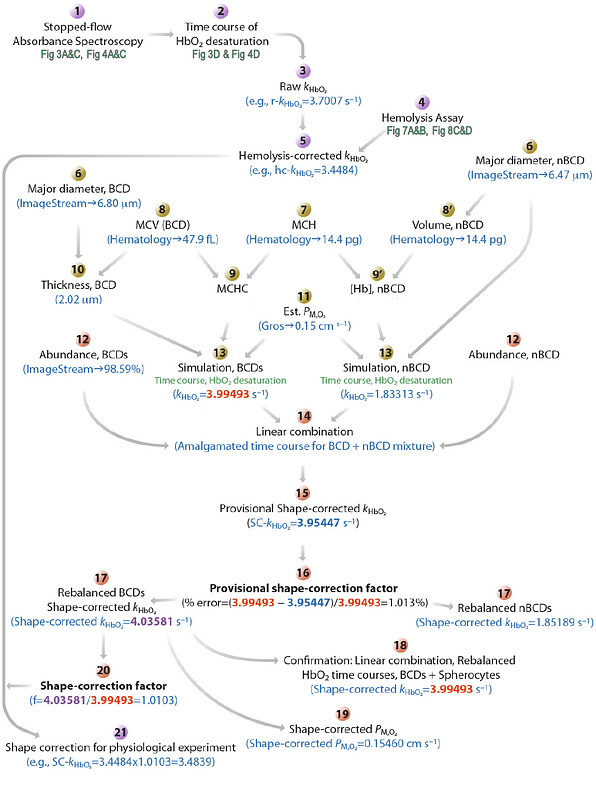Role of channels in the O2 permeability of murine red blood cells II. Morphological and proteomic studies

Role of channels in the O2 permeability of murine red blood cells II. Morphological and proteomic studies
Moss, F. J.; Zhao, P.; Salameh, A. I.; Taki, S.; Wass, A. B.; Jacobberger, J. W.; Huffman, D. E.; Meyerson, H. J.; Occhipinti, R.; Boron, W. F.
AbstractIn this second of three papers, we examine the morphometry of red blood cells (RBCs) from our laboratory mouse strain (C57BL/6Case) and RBC-membrane proteomics. In paper #1, using stopped-flow absorbance-spectroscopy to ascertain the rate constant for oxyhemoglobin (HbO2) deoxygenation (kHbO2), we find substantial reductions in kHbO2 with (1) membrane-protein inhibitors p-chloromercuribenzenesulfonate (pCMBS) or 4,4\'-diisothiocyanatostilbene-2,2\'-disulfonate (DIDS); (2) knockouts of aquaporin-1 (AQP1-KO), or Rhesus blood-group-associated A-glycoprotein (RhAG-KO), or double knockouts (dKO); or (3) inhibitor+dKO. In paper #3, reaction-diffusion mathematical modeling/simulations reveal that kHbO2 could have fallen secondary to: (a) slowed O2/HbO2/Hb diffusion through RBC cytosol, due to increased diffusion distances, and (b) decreased membrane O2 permeability, due to changes in membrane-protein composition. Here in paper #2, blood smears as well as still/video images and imaging flow cytometry (IFC) of living RBCs show that >98% of control (not drug-treated) cells are biconcave disks (BCDs) across all genotypes. Pretreatment with pCMBS raises non-BCD abundance to ~8.7% for WT and ~5.7% for dKO; for DIDS pretreatment, the figures are ~41% and ~21%, respectively. Modeling (paper #3) accommodates these shape changes. Light-scattering flow cytometry shows no significant difference in RBC size or shape among genotypes. IFC reveals minor differences among genotypes in RBC major diameter (OMajor), which (along with mean corpuscular volume, paper #1) yields RBC thickness for paper-#3 simulations. Label-free liquid chromatography/tandem mass spectrometry (LC/MS/MS) proteomic analyses of RBC plasma-membrane ghosts rule out protein-abundance contributions to kHbO2 from major membrane proteins other than those targeted in KO studies.